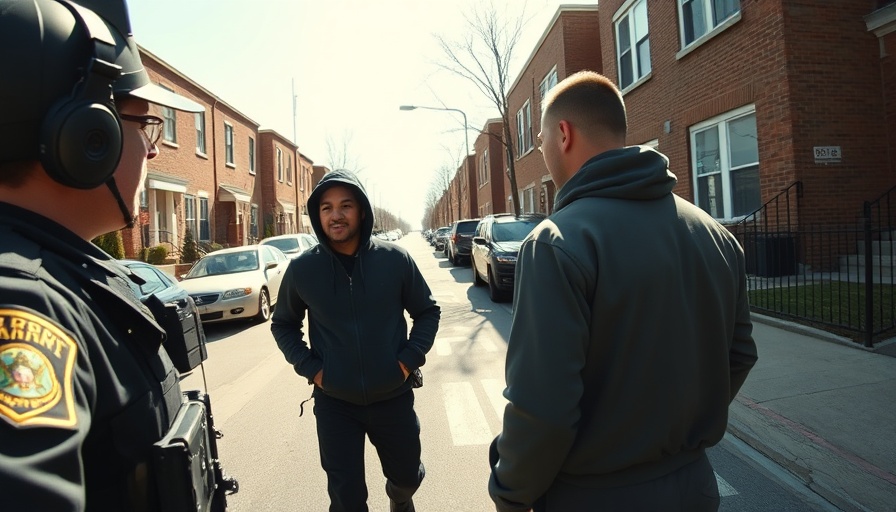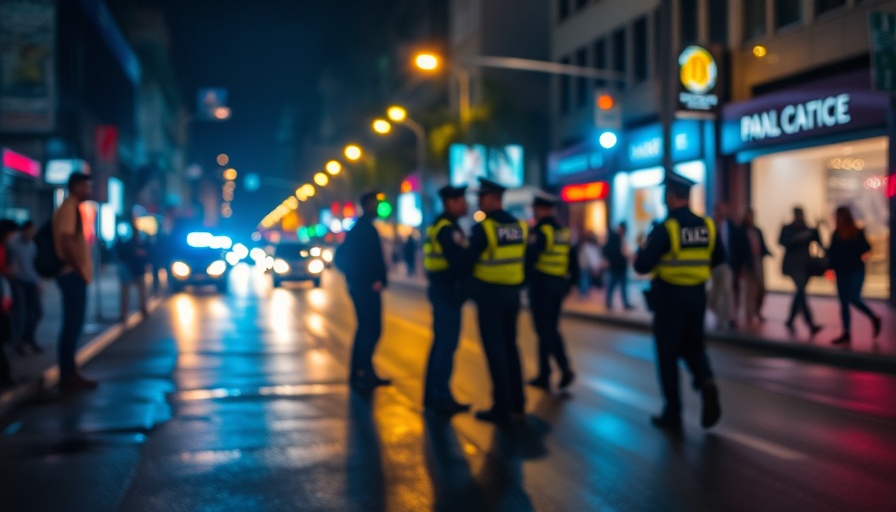
Tragic Incident Sparks Reactions Within Law Enforcement
The recent body camera footage showcasing a Columbus SWAT officer discharging his weapon at a man accused of murdering his 13-year-old daughter raises significant questions about police practices and the use of force. This tragic event not only sheds light on the disturbing realities of violent crime but highlights the complexities that law enforcement officers face during high-stakes situations.
The Facts Behind the Case
In a deeply unsettling situation, the suspect, known to be involved in the death of his daughter, was under surveillance by law enforcement when the confrontation occurred. The footage reveals the suspect's refusal to comply with officers' demands, culminating in a moment where he appeared to draw a firearm. The officer's response to an imminent threat underscores the difficult decisions that officers often have to make, balancing their duty to protect themselves and the public against the potential loss of life.
Police Use of Body Cameras: A Double-Edged Sword?
Body-worn cameras have been a focal point in policing reform discussions, yet they also expose the tragic unpredictability of encounters between law enforcement and civilians. While such technology provides vital evidence in incidents like these, it also reveals the intense scrutiny officers are under when making life-and-death decisions. The video not only assists in the investigation but can also impact public perception of police use of force, serving as both a shield and a lens through which to view police actions.
The Importance of Officer Training and Support
Given the complexities of situations like the one observed in Columbus, ongoing police training, particularly in de-escalation techniques and decision-making during crises, is critical. Improved training can help officers navigate high-pressure scenarios where the potential for violence is heightened. Additionally, providing adequate mental health support for officers involved in shootings can mitigate long-term impacts on their wellbeing, promoting a healthier workplace.
The Broader Implications for Law Enforcement
This incident not only instigates discussions around police use of force but also touches upon the intersection of public safety and community relations. With increased focus on police accountability, understanding how these events unfold and the narratives that accompany them is paramount for fostering trust between communities and law enforcement agencies.
Future Trends in Law Enforcement Technology
Looking forward, technology's role in law enforcement is only set to grow. Innovations like AI analytics could potentially aid officers in evaluating threats during high-stakes encounters, striving for a balance between proactive measures and public safety. However, it is essential that these tools are implemented with careful consideration of their implications for civil liberties, ensuring they support, rather than surveil, our communities.
Conclusion: The Need for Comprehensive Reform
This tragic case illustrates the urgent need for comprehensive reforms in police policies, training practices, and community engagement strategies. As communities around the nation grapple with the impact of police shootings and scrutiny over law enforcement practices, conversations about accountability, transparency, and the misuse of force become more critical than ever. To create meaningful change, stakeholders must advocate for reforms that prioritize both police and community safety.
As we reflect on this incident, it is essential to explore these topics further, educating ourselves on the realities of policing today and advocating for actionable reforms within our justice system.
 Add Row
Add Row  Add
Add 

 Add Element
Add Element 




Write A Comment